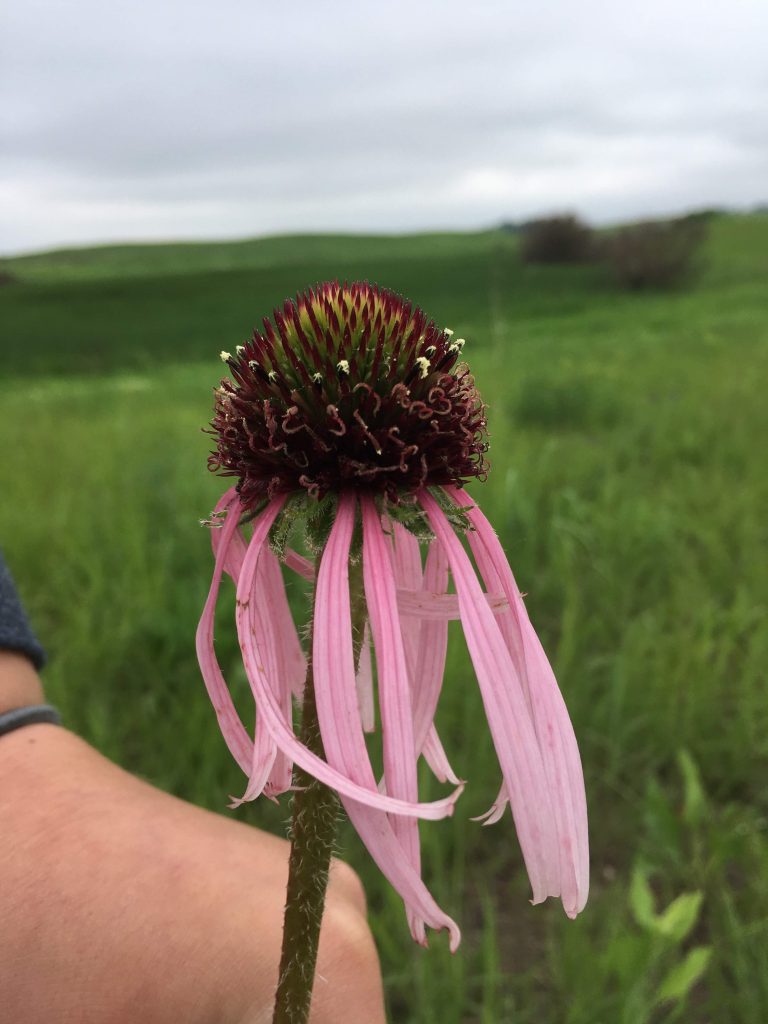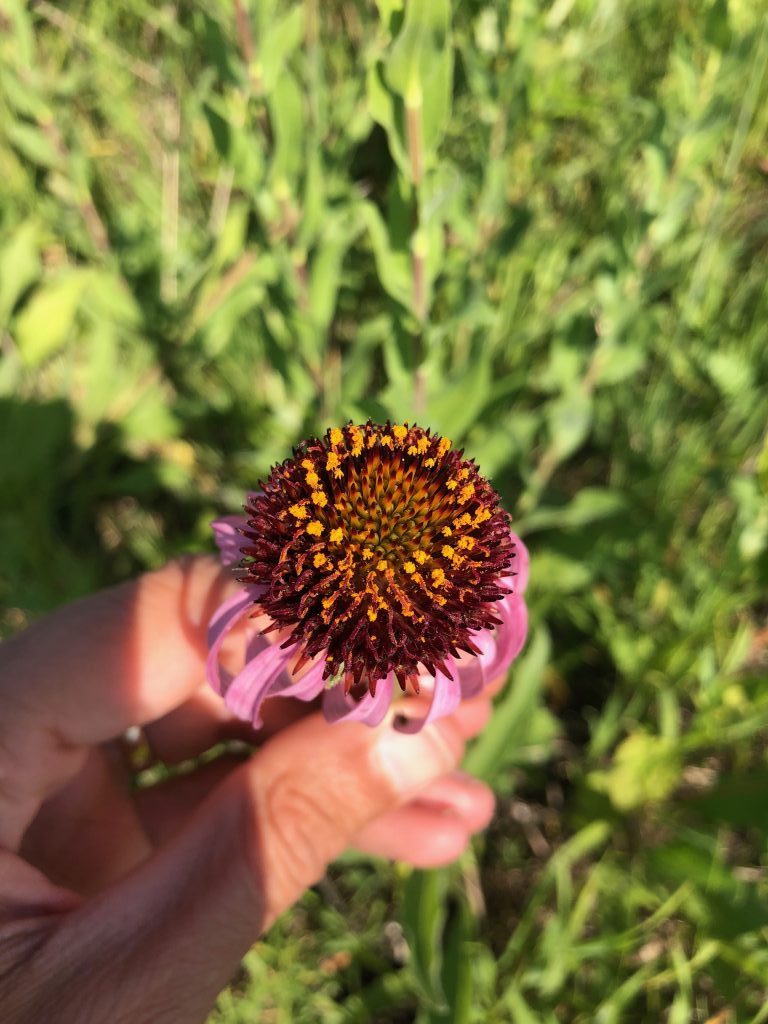Echinacea angustifolia is the only species of Echinacea native to Minnesota, but it is not the only Echinacea species that currently inhabits MN. In the Echinacea Project study area, there are actually three different Echinacea species: E. angustifolia, E. pallida, and E. purpurea. Both non-native species were introduced in restorations from seed that was not locally sourced. We know that non-natives hybridize with our native Echinacea, and we fear that introgression with hybrids may result in genetic swamping of E. angustifolia. We want to learn as much as we can about similarities and differences between Echinacea species in MN so we can assess the threat level of non-native Echinacea in Solem Township and take the proper steps to alleviate the potential threat.
There have been reports that ploidy level varies among Echinacea species (McGregor 1968; McKeown 1999). Specifically, E. pallida is reportedly tetraploid (4n) throughout most of its range, while E. angustifolia and E. purpurea are diploid (2n). There are also reports of E. angustifolia in Oklahoma and Texas being tetraploid (this is a different variety of E. angustifolia from the one we study). Nonetheless, we are interested in the ploidy of Echinacea in MN because it affects whether hybrids are able to reproduce. If a diploid mates with a tetraploid, it produces triploid (3n) offspring; triploids are generally not fertile. Thus, ploidy of non-natives greatly affects the ability of non-native Echinacea to genetically swamp E. angustifolia by creating fertile hybrids.


To investigate ploidy differences between Echinacea species in Minnesota, we will collect and dry tissue from the three different Echinacea species and their hybrids and assess relative genome size using a flow cytometer at the Chicago Botanic Garden. We will also assess relative genome size in seedlings grown from seeds sourced from various latitudes in our species’ ranges to see if the individual species vary in ploidy level throughout their range.


Leave a Reply